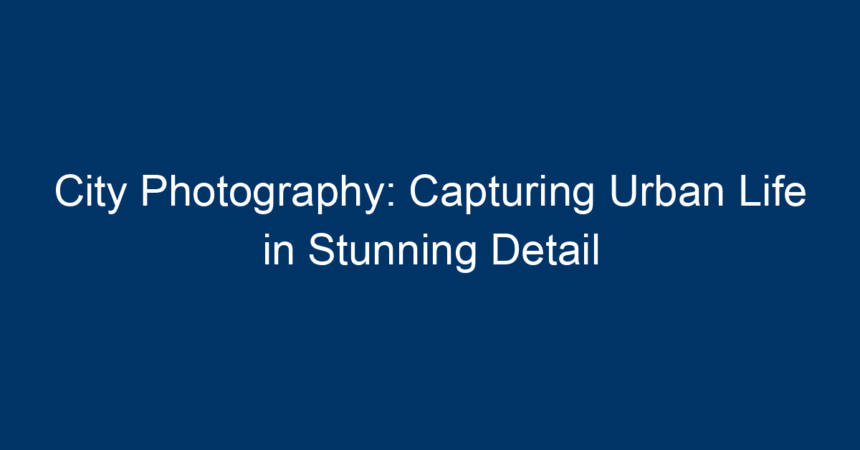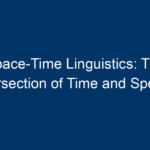City photography is an extraordinary way of expressing the vibrant and diverse essence of urban life. From bustling streets filled with crowds to serene park corners cloaked in shadows, cities offer endless opportunities for photographers to capture moments that tell compelling stories. In this article, we are going to delve into the art of city photography, exploring techniques, tips, and the importance of context to create stunning visual narratives.
The Essence of City Photography
Urban landscapes are filled with personality and emotion. City photography goes beyond simple snapshots; it’s about depicting the heartbeat of an environment and the people who inhabit it. Whether you’re a seasoned professional or a beginner, understanding the fundamental aspects of city photography will elevate your work to new heights.
Why Choose City Photography?
- Diversity of Subjects: Each city is a melting pot of different cultures, architectures, and lifestyles that can inspire innovative shots.
- Dynamic Lighting Conditions: The interplay of light and shadow in urban settings can create striking contrasts that enhance your photographs.
- Storytelling Through Context: Capturing a moment in a city allows you to tell a story, emphasizing the essence of place and time.
Essential Gear for Capturing Urban Life
Camera and Lenses
The first step in city photography is selecting the right equipment. While excellent results can be achieved with a smartphone, using a digital camera offers more flexibility and higher quality.
- DSLR or Mirrorless Camera: These cameras allow you to change lenses and manually adjust settings for optimal exposure.
- Lenses: A wide-angle lens (e.g., 14-24mm) captures expansive urban scenes, while a prime lens (e.g., 50mm with a wide aperture) can excel in low-light situations.
Accessories
- Tripod: For long exposure shots, especially at night.
- Polarizing Filter: Reduces glare and enhances colors, ideal for shooting architecture.
- Extra Batteries and Memory Cards: Urban photography can involve long hours of shooting.
Techniques for Stunning City Photography
Composition Awareness
- Leading Lines: Use roads, sidewalks, and building lines to draw the viewer’s eye into the frame.
- Rule of Thirds: Position important elements along one of the imaginary lines dividing your frame into thirds for dynamic balance.
- Framing: Use doorways or branches to naturally frame your subject, adding depth to your city scenes.
Mastering Lighting
Lighting is one of the most crucial elements in photography. The best times for city photography are usually the golden hours—shortly after sunrise and before sunset.
- Soft Window Light: Capture the warm glow that urban buildings reflect off each other during these hours.
- Night Photography: Shooting at dusk allows you to catch vibrant city lights, which can create an inspirational atmosphere.
Embracing Motion
City life is all about movement. Use slower shutter speeds to capture motion blur, such as streaks of light from cars or the hustle and bustle of pedestrians. This technique creates a feeling of energy and liveliness in your images.
Candid Shots
Urban life includes spontaneous moments. Capture people in action—street performers, commuters, or families enjoying a day out. These candid shots reveal authentic slices of daily life and can be more impactful than posed images.
Post-Processing Tips for Urban Images
Post-processing can dramatically enhance your city photography, allowing your images to resonate more with viewers.
Editing Software
Consider using tools like Adobe Lightroom and Photoshop for your editing.
- Adjust Exposure and Contrast: Fine-tune your images to bring out details.
- Color Correction: Enhance colors for vibrancy, particularly in street art or graffiti.
- Sharpening: Apply sharpening gently to maintain realism in textures, especially in architecture.
Creative Filters
Experiment with black and white filters to create a timeless feel or adjust saturation to evoke particular moods. Remember, the goal is to enhance your photo while staying true to what you captured.
The Importance of Understanding Context
Capturing the essence of city life is not only about technical skills but also about understanding the context of your photographs.
Historical Significance
Cities often have rich histories that inform their modern-day settings. Researching the backdrop can influence your approach and help you convey meaningful stories through your images.
Local Culture
Every city has its unique character shaped by its residents. Pay attention to local festivals, street fairs, and other cultural events that may provide rich material for storytelling.
Ethical Considerations
When photographing in public spaces, it’s essential to respect people’s privacy and the cultural sensitivities. Always seek permission when necessary, and be mindful of how your images might be perceived.
Conclusion: Unleashing Your Urban Photography Potential
City photography is an exhilarating journey of discovery and story-telling. By understanding technique, honing your skills, and developing a keen eye for the subtle details that make urban life fascinating, you can create visually stunning images that resonate deeply with your audience.
Actionable Insights
- Practice Regularly: The more you shoot, the better you’ll get. Challenge yourself to take a photo a day in your local city.
- Engage with the Community: Join local photography clubs or online forums to share your work and get feedback.
- Stay Inspired: Follow established city photographers on social media platforms and explore photography books to broaden your perspective.
As you embark on your city photography journey, remember that every city has its unique stories waiting to be told. Grab your camera, explore the streets, and let your creativity shine as you capture the pulse of urban life in stunning detail.




